Ammania gracilis
Scientific name: Ammania gracilis
Family: Lythraceae
Maximum size reached under cultivation: 20 - 50 cm (7.87 - 19.69 inch)
014
Recommended pH range: 6 - 8
Recommended water hardness: 4 - 12°dGH (71.43 - 214.29ppm)
0°C 32°F30°C 86°F
Recommended temperature range: 20 - 28 °C (68 - 82.4°F)
Preferred propagation method: Cuttings
Native to: Africa
Growth rate: Fast
Recommended substrate: Gravel
Lighting requirements: Bright
Ideal placement in tank: Background
Common Names
Copper Red Ammania
🌍 Origin
Ammania gracilis originates from West Africa, particularly from tropical regions like Senegal, where it thrives in wetlands, marshes, and along riverbanks. Naturally adapting to both submerged and emersed conditions, it flourishes in warm, humid climates, making it a suitable choice for aquariums and paludariums alike.
🔎 Quick Overview
- 🌊 Ideal For: Aquariums, paludariums
- 🧑🌾 Difficulty Level: Medium to Difficult
- 💨 CO2 Requirements: Strongly recommended for submerged growth
🌱 Growing Conditions
Ammania gracilis demands intense lighting and nutrient-rich substrate to showcase its vivid red leaves. While it can grow submerged in aquariums, it shows its best coloration and structural strength when cultivated emersed in paludariums or humid setups. Submerged growth requires bright light and consistent fertilization. Without these, the plant may become pale or stunted.
It prefers slightly acidic to neutral pH (6–8) and moderate water hardness (4–12 dGH). For strong root development, plant it in a gravel substrate. Adding CO2 injection enhances its growth rate and helps preserve its vibrant coloration.
🏞️ Planting Area
With a mature height of up to 50 cm (19.69 inches), this species is best used in the background of aquascapes. When grouped, it provides stunning contrast against green foliage, particularly in Dutch-style layouts. Ensure adequate spacing between plants to avoid crowding and to promote optimal light exposure and water flow.
🔁 Propagation
Propagate Ammania gracilis using stem cuttings. Cut stems at least 10 cm (4 inches) in length from healthy shoots, remove the lower leaves, and replant into the substrate. Cuttings will develop roots when provided with good lighting and nutrients. Routine trimming encourages compact, bushy growth and maintains plant health.
🧪 Difficulty
This species is moderately to highly demanding, especially when submerged. It requires bright light, CO2 supplementation, and nutrient-rich water to grow properly. If neglected, its signature red hue fades and growth slows dramatically. However, under the right care, it rewards aquarists with rapid vertical growth and vivid coloration.
🌿 Short Description
Ammania gracilis is a fast-growing, richly colored stem plant prized for its copper-red leaves. Though capable of emersed or submerged growth, it performs best with strong light, CO2, and regular fertilization. Emersed growth often results in deeper coloration and sturdier stems, while submerged growth needs careful management. Ideal for aquascapers aiming to introduce bold color and vertical movement into high-maintenance or semi-aquatic environments.
Its use in Dutch-style aquariums and fast-growing nature make it a valuable addition for hobbyists looking to build dynamic, layered layouts.
💡 Lighting Requirements
To maintain health and color, provide high-intensity lighting. Aim for 0.5–1 watt per liter (2–4 W/gal) under fluorescent lights, or 30–40 lumens per liter (120–160 lumens/gal) with LEDs. Ensure a daily photoperiod of 8–10 hours. In high-light setups, CO2 further boosts plant density and helps prevent lower leaf loss.
⚠️ Potential Issues
- 🟡 Yellowing or Browning Leaves: Often caused by low iron, potassium, or weak lighting.
- 🐌 Poor Growth: Linked to nutrient imbalance, lack of CO2, or low light levels.
- 🍂 Leaf Decay: Can occur in shaded or poorly fertilized tanks. Improve lighting and dosing.
🌟 Overall Appeal
Ammania gracilis adds dramatic flair to aquariums and paludariums with its vibrant red foliage and strong vertical presence. Though care-intensive, it is a rewarding species that offers striking contrast and dynamic structure. A must-have for experienced aquascapers seeking vivid coloration and fast, healthy growth.

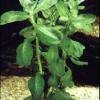 Ammania senegalensis
Ammania senegalensis Didiplis diandra
Didiplis diandra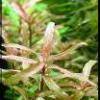 Nesaea crassicaulis
Nesaea crassicaulis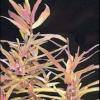 Rotala indica
Rotala indica Rotala macrandra
Rotala macrandra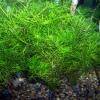 Rotala nanjenshan
Rotala nanjenshan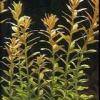 Rotala rotundifolia
Rotala rotundifolia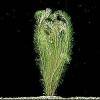 Rotala wallichii
Rotala wallichii